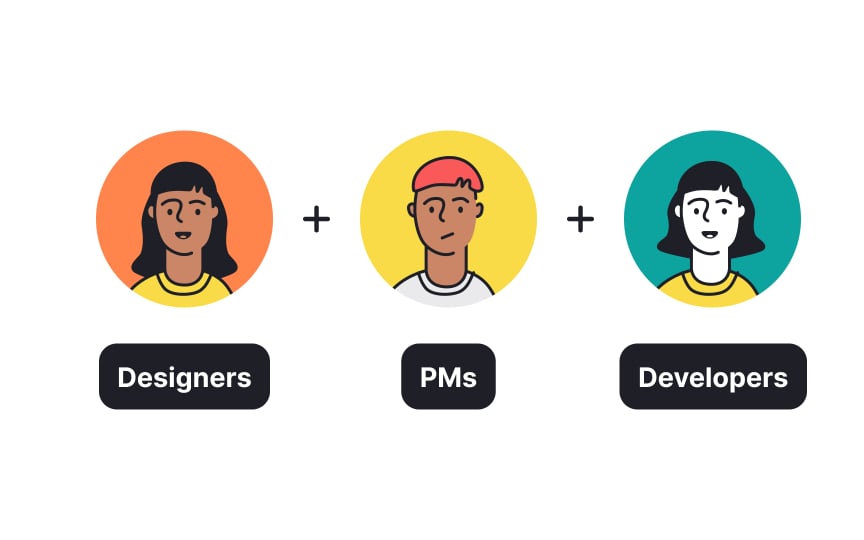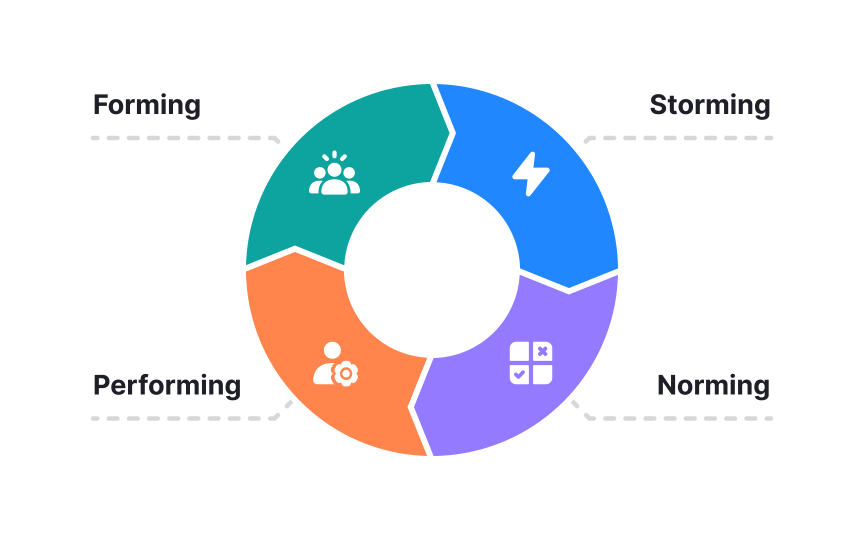Introduction to Cross-Functional Teams
Explore the fundamentals of cross-functional teams to build strong collaborative foundations
Cross-functional teams combine different experts like designers, product managers, and developers into one collaborative group. Modern companies have moved away from keeping these specialists in separate departments, instead bringing them together to create better products. These mixed teams make decisions faster and solve problems better because they represent different viewpoints.
Strong cross-functional teams help companies stay competitive by creating products that truly meet customer needs. The mix of different skills and perspectives helps catch problems early and creates solutions that work better for everyone. Teams that master these basics consistently deliver great products and help their companies succeed in the market.
Cross-functional teams unite professionals with diverse expertise working collaboratively toward shared product goals. Unlike traditional departmental structures, these teams bring together designers, developers, product managers, and other specialists to work side-by-side throughout the product development lifecycle.
More and more organizations today are shifting from traditional hierarchical structures to cross-functional teams, reflecting modern needs for agility and innovation. This evolution began as organizations recognized that siloed departments and lengthy approval chains hindered rapid product development. Modern cross-functional teams eliminate these barriers, enabling quick iterations through direct collaboration and shared ownership, leading to faster market response and improved product and business outcomes.[1]
Here are some key benefits of building a cross-functional product or design team:
- Combines diverse skills from engineering, design, marketing, and product teams
- Speeds up decision-making by addressing challenges in real-time
- Provides a well-rounded view of customer needs, leading to better products
- Encourages creative solutions by bringing in multiple perspectives
- Enhances adaptability through close collaboration
- Fosters teamwork and accountability with a shared commitment to product success[2]
The foundation of any successful cross-functional team lies in its thoughtful composition, combining both essential and supporting roles to create a well-rounded unit.
Core members typically include a product manager who guides strategy, UX/UI designers and writers who craft user experiences, developers who build solutions, and quality assurance engineers who ensure product excellence. This nucleus is often supported by specialists like UX researchers, business analysts, and subject matter experts who provide crucial insights and expertise as needed. While organizational structures vary, most companies incorporate some version of these roles to support their product development processes.
What sets exceptional teams apart is not just the presence of these roles, but how they interact. Each member brings complementary skills and working styles, with clear role definitions but flexible boundaries that allow for collaboration and skill sharing.
Teams naturally progress through 4 stages:
- Forming: Team members get acquainted with each other’s languages and approaches.
- Storming: They navigate initial conflicts and differences in priorities and methodologies.
- Norming: They establish expectations and shared practices that respect each discipline's needs.
- Performing: Team members leverage their diverse expertise seamlessly, with each member understanding how their role contributes to the broader team success.[3]
Each stage presents unique challenges in cross-functional environments, where different professional backgrounds and working styles intersect. Use regular retrospective meetings to identify your team's current stage and adjust leadership style accordingly.
Measuring success in cross-functional teams requires a balanced approach that goes beyond traditional project metrics. Cross-functional success metrics typically span 4 key areas:
- Delivery performance: Measures the team’s speed and quality in delivering projects.
- Team effectiveness: Assesses collaboration and decision-making. Effective teams communicate well and make timely, sound decisions.
- Business impact: Focuses on the value delivered, customer satisfaction, and the resultant business impact.
- Team growth: Tracks skill development and knowledge sharing. Growing team capabilities indicate a healthy, evolving team environment.
What makes these metrics particularly powerful is their interconnected nature — improvements in team collaboration often lead to better delivery metrics, while strong business results typically correlate with high team engagement.
Pro Tip: Review and adjust your metrics regularly to ensure they still align with team and business goals.
Cross-functional teams frequently encounter specific obstacles that can impact their effectiveness. Understanding these challenges helps teams proactively develop strategies for success.
Here are the most common challenges:
- Communication challenges often arise from different professional languages – developers, designers, and product managers each bring their own terminology and frameworks.
- Priority conflicts emerge when different functions have competing deadlines or success metrics.
- Decision-making becomes complex when multiple experts need to align on solutions.
- Cultural differences appear both in work styles (like designers' iterative approach vs. developers' systematic methods) and in how different functions approach problems.
The first and most crucial step in addressing these challenges is creating a shared understanding among team members—establishing common ground in language, goals, and working methods before tackling more complex issues. You can also slowly create a shared challenge resolution playbook that grows with your team's experiences.
A strong team culture forms the bedrock of successful cross-functional collaboration. This critical foundation begins with psychological safety — ensuring every team member feels safe to take risks, share ideas, and voice concerns without fear of negative consequences. In cross-functional teams, this is particularly crucial as members bring different perspectives and working styles.
Key cultural elements include but are not limited to:
- Open discussion of mistakes as learning opportunities
- Comfort in sharing incomplete ideas
- Ability to challenge ideas respectfully
- Support for experimentation and innovation
- Commitment to continuous learning
- Focus on collective success over individual achievement
- Active
knowledge sharing across functions - Support for work-life balance
Real culture emerges not from written documents but from consistent daily behaviors and actions that demonstrate these values.
Pro Tip: Recognize and celebrate behaviors that exemplify your desired team culture, making values visible through actions.
Similar lessons

Continuous Discovery Mindset

Business Outcomes vs. Product Outcomes






















